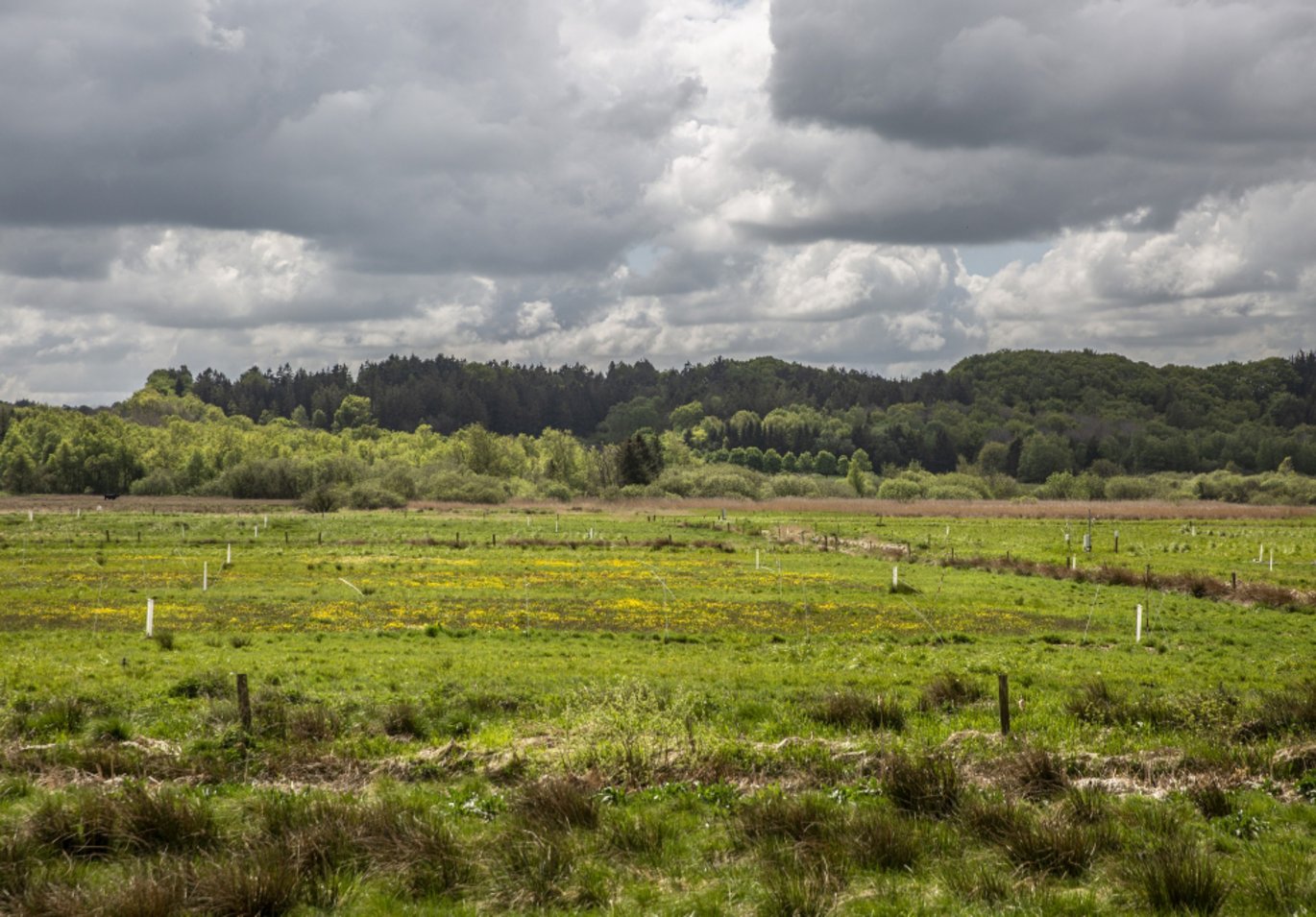Carbon supply on flooded organic soils
Measurements of biomass above and below ground provide a more accurate basis for quantifying carbon supply to the soil in carbon-rich wetlands than the established standard factors from the IPCC - UN Climate Panel.

A high content of organic matter not only increases the fertility of the soil, the more carbon that is bound in the soil, the better it is for the climate. Quantification of the soil's organic carbon stock is therefore critical for climate and land management decisions. An example of a strategy to reduce the climate impact is to extract and flood peatland soils with a high content of organic carbon. In Denmark, peatland soils with more than 6% organic carbon cover almost 291,000 hectares, and more than half are currently used for agriculture. Emissions from the cultivated peatland soils account for up to 40% of agriculture's total greenhouse gas emissions.
“Therefore, wet-laying and set-aside of cultivated lowland soil has great political support. Up to 88,500 hectares can potentially be set aside in Denmark. But it also means that there is a need to be able to document the carbon sequestration from plant biomass when the soil is converted to permanent grasses or rewetted,” says PhD student Claudia Nielsen from the Department of Agroecology at Aarhus University.
In a new study, she has investigated and mapped how the carbon supply to the soil is affected by subterranean and aboveground biomass, respectively, and how these are affected by different harvesting strategies. The study also resulted in a new way of estimating the supply of carbon to the soil's organic carbon stocks.
The number of cuts affects the carbon storage
“It is not new that the carbon supply is affected by the supply of biomass both above and below ground, as well as biotic and abiotic factors, but how the frequency of cutting the crop affects the relationship between root and shoot on the plants and thus the development of biomass above and below ground is not previously investigated,” says Claudia Nielsen.
Three different flood-tolerant grass species were included in the annual experiment: reed grass, tall fescue and festulolium. For each species, the researchers studied the effect of zero, one, two and five cuttings, to see how the number of cuttings affects the root-shoot ratio in the plant and thus the biomass above and below ground.
“We found that the relationship between the roots in the soil and the plant's shoots above the ground was significantly affected by the cutting frequency. The more cuttings the less subterranean biomass, and the result was the same for all three grass species. In other words, this means that the supply of organic carbon to the soil in the year of establishment is highest when the grass is allowed to take care of itself and the areas are not harvested. It does however not fit so well with an agricultural utilization, and in relation to maintaining a farm on the land, a strategy with two cuttings showed the greatest potential for carbon supply in our study,” says Claudia Nielsen.
Important with accurate calculations
In addition to results for the best possible management of peatland with permanent grass, the study also showed the importance of being able to accurately define the root-shoot ratio for calculating the carbon supply to the soil to avoid over- or underestimation.
“Our results showed that there are significant differences in the annual carbon supply to the soil and that it is dependent on the root-shoot ratio. We found that when we used the IPCC's standard factor for root-to-shoot ratio, which is 2.8, it resulted in 55-71% higher rates of carbon supply compared to our two- and five-year-old scenarios,” says Claudia Nielsen, who explains that the discrepancy indicates a significant inaccuracy for the quantification on wet grasslands with a high carbon content. And that, according to the researchers, could have far-reaching consequences for decision-makers, policy interventions and carbon accounting in the future.
"We have demonstrated here how measurements of biomass above and below ground provide a much better basis for estimating the soil's carbon supply," says Claudia Nielsen, who would like to see research over several years in the field, as this study was conducted in the year of establishment, and thus does not show results for permanent grass species that have been established for several years.
Additional Information | |
We strive to ensure that all our articles live up to the Danish universities' principles for good research communication (scroll down to find the English version on the web-site). Because of this the article will be supplemented with the following information: | |
| Study type | Empirical study |
| Collaborators | Department of Agroecology at Aarhus University and CBIO - Aarhus University Center for Circular Bioeconomy. |
| Funding | This study is funded by the PEATWISE project within ERA-NET FACCE ERA-GAS. FACCE ERA-GAS has received funding from the EU Horizon 2020 research and innovation program under grant agreement No. 696356. This publication was further funded by Interreg-pr the CANAPE project under the North Sea Region Program and the European Regional Development Fund. In addition, the study is partly supported by Aarhus University's Center for Circular Bioeconomy |
| Conflict of interest | None |
| Read more | The publication "Root-To-Shoot Ratios of Flood-Tolerant Perennial Grasses Depend on Harvest and Fertilization Management: Implications for Quantification of Soil Carbon Input" is published in Frontiers in Environmental Science. It is written by Claudia Kalla Nielsen, Uffe Jørgensen and Poul Erik Lærke. |
| Contact | PhD student Claudia Nielsen, Department of Agroecology, Aarhus University. Mail: claudia@agro.au.dk |
